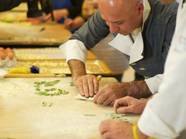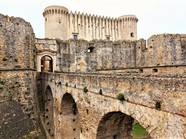There have always been tensions between Italy and France, regarding anything from serious issues to petty quarrels. Most recently, adding to the long list of blows from both sides, is the attack from Ségolène Royal, the French Minister for Ecology, Sustainable Development and Energy, on the popular Italian chocolate-hazelnut spread Nutella.
On June 15th, during a live interview on a program called the “Grand Journal” on the French television network Canal +, Royal urged everyone to stop eating Nutella, because of the product’s use of palm oil.
Although it’s true that the production of palm oil is often linked to deforestation – a very serious threat to the health of our planet – with natural forests being taken down to make space for palm tree plantations, it’s not always the case.
Ferrero, the Italian food company in charge of Nutella, immediately responded, stating that they use “100% certified sustainable palm oil” and that as of December 1st, 2015 they have been part of the Roundtable on Sustainable Palm Oil (RSPO). A piece of information that as some have pointed out is readily available on their website.
The intensity of the responses coming in from Italy, particularly through social media platforms, was quite astounding but it was to be expected. Italians love their Nutella, and having it unjustly attacked, by a French minister of all people, was just too much to bear.
With all the companies across the planet that make use of palm oil, often through the unsustainable and harmful methods, it makes one wonder why Royal had to attempt to boycott Ferrero’s product, without even bothering to make a quick background check on the company’s practices.
Let’s also keep in mind that the atmosphere is already currently very tense between France and Italy what with the issue of France closing its borders, blocking the passage of migrants into Northern Europe and causing them to stage a sit-in protest on the Italian side, in Ventimiglia.
This is clearly a completely different issue but it provides an explanation for why Italian officials quickly stepped in to protect the good name of Nutella and along with it, that of Italian products in general. Royal’s Italian counterpart, minister Gian Luca Galletti, asked her to “leave Nutella alone”.
Outside entities also criticized the attack. Greenpeace, one of the most well known environmental organizations in the world, also stepped in to stress the uselessness of boycotting Nutella, mentioning how it would actually more likely be counterproductive considering Ferrero’s position as one of the few companies who are actually working towards making palm oil sustainable.
Pressured by such widespread responses, the French minister publicly apologized via tweet on June 17th, making sure to state that she’s all for the recognition of progress. And all of us – Italian and French alike – hope she means it.






































